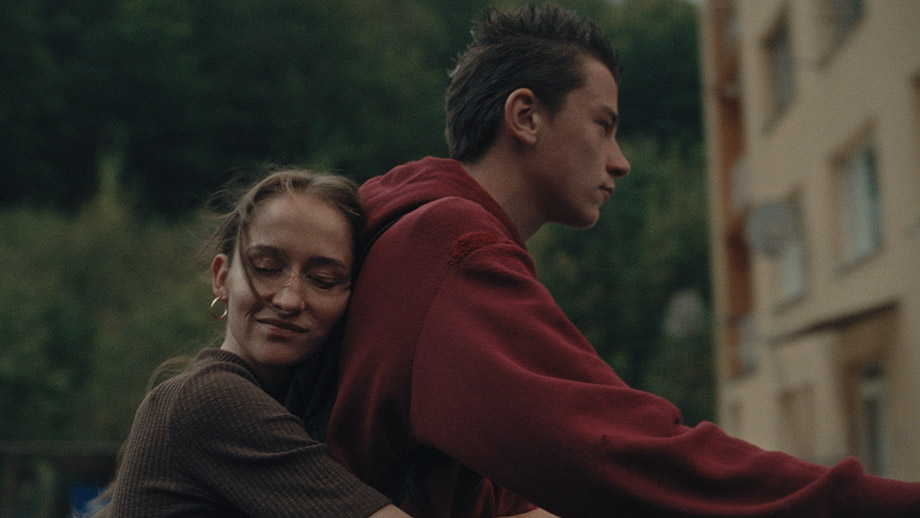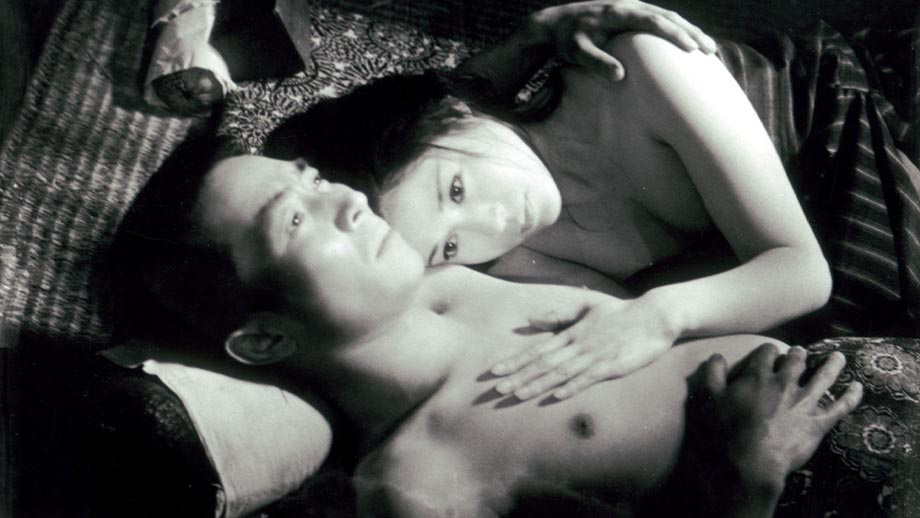Whatever its pedigree in East Asia, the Tokyo International Film Festival has not nearly been so known to the Western world. A quick scan of past editions wouldn’t suggest it’s flown under-radar for good reason––line-ups comprise a strong mix of titles established at other festivals, debut directors, and cinematic luminaries on the competition jury––but perhaps exemplifies how coverage of larger gatherings (with, at best, five-seven offshoots and satellites earning likewise) collides with increasingly limited financial and physical resources, stranding the vast majority of festivals to local press. Thus rendering 2024’s edition something of a watershed: its experienced an influx of newly invited English-language journalists, many (myself included) visiting Tokyo itself for the first time.
Curious about the workings of a flagship festival in a major city, I took the opportunity to speak with TIFF’s Artistic Director, Ichiyama Shôzô, whose credentials extend well beyond his current title. Shôzô’s production partnership with Jia Zhangke spans 2000’s Platform to this year’s Caught By the Tides; he previously assisted operations at Takeshi Kitano’s Office Kitano Inc. and produced work for Hou Hsiao-hsien and Samira Makhmalbaf; and in 2000 he started the Tokyo FILMeX festival, which holds its latest edition this month.
Seated with myself and three other journalists in the Tokyo Midtown Hibaya, Shôzô offered an unusually candid window into how festivals operate. This year’s Main Competition line-up impresses for its focus on Asian titles to which Western notice is essentially non-existent. While it likely behooves the organization (in finance and coverage) to screen “bigger” work they can anoint a press-friendly award, Shôzô explained to a fellow journalist, “We have in our regulations that a film should be at least the Asian premiere. Also, we exclude films that show in main competition at a major festival––like Berlin, Cannes, Venice, Locarno, or San Sebastian. Of course we show very good films in the competition, but also we want the people to discover the new filmmakers.”
This doesn’t exclude notable places for Berlinale winner Dahomey in the World Focus sidebar. And there exists a dichotomy wherein first-time filmmakers offer titles that would constitute world premieres but, quoting Shôzô, “the film is not so good” while “submissions by very famous filmmakers” aren’t up to snuff and accordingly excluded––these twin poles creating the exact space for talented, deserving newcomers. One title on which he seems especially keen: Slovakain director Katarína Gramatová’s debut Promise, I’ll Be Fine, a film that’s plainly strong but goes above and beyond for arriving so out-of-the-blue.

Promise, I’ll Be Fine (Katarína Gramatová)
Shôzô is, again, no novice. He served on Tokyo’s programming team from 1992 to 1999––an era of reviewing heavy 35mm prints or clunky VHS tapes that, I noted, is downright pre-historic in our time of streaming links that programmers could (not necessarily should) just watch en route to their selection meeting. The Director immediately affirmed this compare-and-contrast.
“In the 1990s there were, of course, a number of films selected, but it was less because of VHS tapes. Most of the entries were by VHS tapes. Some of the tapes take time and also budget, because a producer must send the VHS tapes; they cannot send many. Now, most of the films come to the festival by the links. In this case it’s easy to submit. So if one sales agent had ten films, they can send everything together. But in the 1990s, maybe they select some films. ‘Maybe this won’t go to Tokyo because it costs a lot to send VHS tapes.’ One problem now is that there are so many submissions, so we need pre-selection members. Our principle is: somebody should watch a film anyway. Of course the final selection committee cannot watch all films, but at least some of the pre-selection members should watch a film. So every year, we must increase the number of pre-selection members. Because after COVID, there were more and more submissions. But this is good for us. We have the possibility to watch so many films. I say it’s better than the 1990s.
Another change is: in the 1990s, I went to some countries—Korea or China or Hong Kong—for a selection, but now it’s not necessary; so many films are selected by links. But before there were many films we could not watch if we didn’t go there. There were some new films, but they said the videotapes are not ready. In this case I must go to Korea. In the 1990s, I was invited to go to Italy after the Cannes Film Festival. There’s still such a thing going on, but now I think it’s not necessary. Of course it’s better to watch a film in a screening room than on links, but I think the result is not so different; if the film is quite strong, we can understand the film is very good even if we watch the film on links.”
The series of restored “Japanese Classics” may be Tokyo 2024’s single most formidable section: three titles by Yasuzō Masumura, Kinji Fukasaku’s Wolves, Pigs and Men, a trio of filmmakers lesser-known in Western cinephilia (Satsuo Yamamoto, Masahiro Makino, Teruo Ishii), and the 70th-anniversary 4K restoration of Godzilla. Shôzô’s perspective on the series is practical, suffused with frustration at exhibition issues facing Tokyo as a whole, and points towards an ambitious future.

The Wife of Seisaku (Yasuzō Masumura)
“Every year, some films are restored. And this year we showed three films by Yasuzō Masumura. He made very good films, but most of them are 35mm. Now it’s very difficult to show the 35 films in the cinemas. Even in this area, there is no cinema which can show the 35—only the National Film Archives. And this year we showed the Kijū Yoshida retrospective in the National Archives, but unfortunately not so many films are restored, so we only have the 35mm print. This year there are no choices and we must show it at the National Film Archives. Last year we had a very big retrospective of Ozu, but more than half of the films are not restored yet, so we showed the films in the Archives. It’s important to keep showing these classic films.
Even if a film does not have the restored DCP, it’s very rare to watch a film even in Japan. In Japan there are some of the small cinemas which show the 35mm prints, but in the Ginza area it’s very rare to find such cinemas. So most of the audiences do not have a chance to watch classic films. There are no restored versions; it cannot be shown on TV, because on TV they require some high-definition images. So many films can’t be shown. One thing we must think about is: we need to restore so many films. There are so many good films which are not shown in theaters. Of course we do not have the budget to have a DCP restoration made, but some companies—like Kadokawa or Shochiku—are eager to restore the films. We tell each studio, ‘Please restore films in your library so we can show it.’ This is necessary for the film festival. At Cannes, Venice, and Berlin, they all have the classics section showing newly restored prints. If we have a very big budget soon, we can restore the films by ourselves. We are just asking the film studios to restore so we have the place to launch the new, restored DCPs.”
Finally, I noted that this year’s jury constitutes a remarkably strong corps in its own right (Tony Leung, Johnnie To, Ai Hishabashi, Ildikó Enyedi, and Chiara Mastroianni) all the more for standing apart from the common need to find international stars who, frankly, are not suited to the films any serious festival will showcase. It seems germane enough to his concerns that Shôzô launched into an answer before I could completely finish my question:
“The most important thing is that we need a jury with good taste. Actually, I’ve known Tony Leung and Johnnie To in-person a long time. I know they’re very good jury members and they have very good taste. Not because of their fame. We asked them to be jury members because they have very good taste. Ildikó Enyedi, I met her in-person here, but I had a jury together in another Chinese film festival during the pandemic. So during the pandemic, we did a remote discussion. We watched the same films, so I knew her taste is very good. That’s why we asked her. Ai Hashimoto is a Japanese actress. She’s very young, but she’s very [much a] cinephile. She goes to the cinemas, even if she’s a very popular actress. Chiara Mastroianni is the only person who I didn’t know before, but she’s been a jury member in many festivals and every film-festival programmer praises her. She’s very nice, a very good person, and she has good taste. And this year is the 100th anniversary of Marcello Mastroianni. We decided on a retrospective in early times; after, in Cannes, we watched Marcello Mio; she’s very good in the film. So that’s why we asked her to be a jury member. She’s the only person who I didn’t know before. But every festival programmer praises her.
The most important thing is that we must choose good jury members. Not because of their names. Some film festivals just send invitations to the very famous filmmakers or actors. In the 1990s, when I was in the Tokyo Film Festival, the Tokyo Film Festival was like this: they just sent invitations to the famous actors and actresses, and sometimes it’s very big trouble. Because some actors or actresses can’t understand other cinemas, so their opinions are very different from other jury members. It’s a big discussion. I do not want to do this. When I was at a festival in the 1990s, I was not in charge of the competition; I was in charge of the Asian sidebar. I knew many problems that happened every year—because the festival just sent invitations to the very famous actors or filmmakers without knowing their taste. After I became the program director, I’m asking the filmmakers or actors who have good taste.”
It goes without saying that whatever’s honored by Tokyo’s 2024 jury deserves more attention and pedigree than famous actors and actresses flailing around. Awards will be announced when the 2024 edition concludes on Wednesday, November 6.
